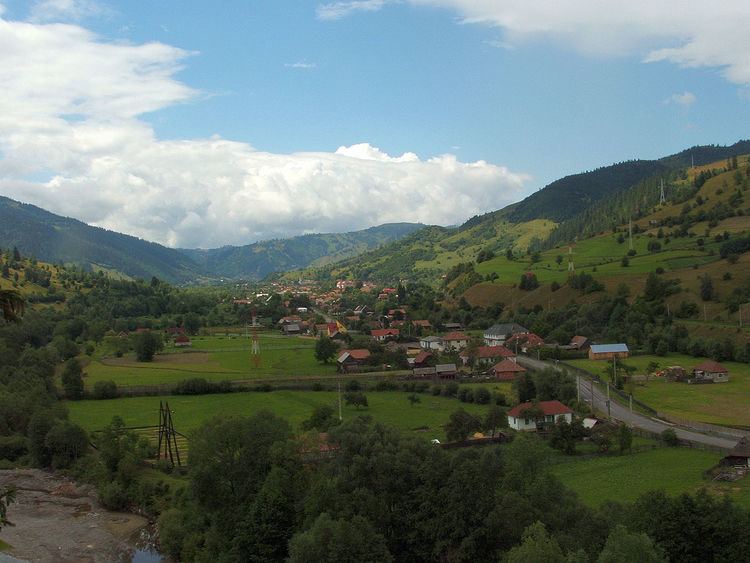Time zone EET (UTC+2) Area code(s) +40 234 Area 184.8 km² Local time Monday 3:03 PM | Postal Code 607205 Elevation 745 m Hungarian population 57.5% | |
 | ||
Weather 2°C, Wind N at 18 km/h, 98% Humidity | ||
Ghimeș-Făget (Hungarian: Gyimesbükk, [ˈɟimɛʃbykk] or sometimes Nagy-Gyimes) is a commune in Bacău County, Romania. It is the only commune in the county that lies in the historical region of Transylvania.
Contents
Map of Ghime%C8%99-F%C4%83get, Romania
Component villages
The commune, the seat of which is Făget village, is composed of six villages:
History
The village was part of the Székely Land region of the historical Transylvania province. It was first mentioned in 1600 as Gijmes. The area of the commune belonged to Csíkszék until the administrative reform of Transylvania in 1876, when it fell within the Csík County of the Kingdom of Hungary.
The village was occupied by the Romanian army between 13 and 20 November 1918. Shortly thereafter, the Union of Transylvania with Romania was proclaimed, and the village, like the rest of Transylvania, formally passed with the Treaty of Trianon from Hungarian to Romanian control in 1920. In 1940, the Second Vienna Award granted Northern Transylvania to Hungary and the village was held by Hungary until 1944. With the Soviet occupation near the end of World War II, the Romanian administration returned and the commune's status as part of Romania was formalized in 1947.
Until 1918, it was a border village between Hungary and Romania and as such, it had an important and large railway station designed by Hungarian architect Ferenc Pfaff. The main building of the station was 102m long and 13m wide, comparable in size and elegance with the railway stations of Szeged and Fiume.
In 1950, as part of a wider administrative reform, the commune was transferred from Ciuc County to Regiunea Bacău. School education in the Hungarian language was abolished in 1965. Local teacher and school director András Deáky advocated for teaching in Hungarian and re-organized it after 1990. He also established a Hungarian language library from donations of the public.
Demography
In 2002, it had a population of 5,340; out of them, 2720 were Hungarians, 2522 were Romanians and 71 were Csangos. As to religion, 58.03% of the villagers are Roman Catholics, while 41.44% of them belong to the Romanian Orthodox Church.
